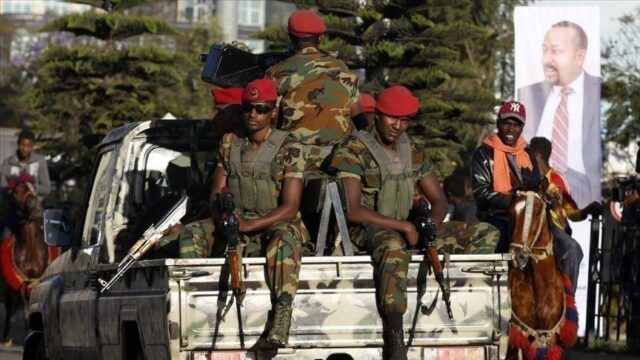I have completed data collection and at the stage of writing the research report. But because of
the nature of my research on an ongoing process, I continue to update my finding from the
source as new events continue to unfold.
I have learnt many things in the field that include.
As the major commitment, the Ethiopian parliament has taken to establish the Ministry
of Peace. Based on the new Mandate, the Ministry of Peace was restructured and
currently High-Level Leadership is given by one Minister and two State Ministers, State
Minister, Peace Building and State Minister, Federalism and Conflict Management.
Through the structures, the ministry of peace tried to building Peace Values and Culture
by continues dialogues and establishing and Promoting Peaceful Co-existence among
Regions and Faiths Institutions by Enhancing and Building Trust, Tolerance and
Respect between the communities through Inter and Intra -regional dialogues. And,
strengthening Federalism though consensus building on Federalism and National
Cohesion
Both the federal and regional government attempted to implement the peace agreement
according to the Pretoria agreement. But, until now the implementation of peace
agreement is not going very well, because of various internal and external factors.
Despite the peace agreement and some warm movement toward implementation, the
situation remains tense, and there is much that stands in the way of lasting peace in the
region. According to the agreement, the protection of civilians’ human rights; the
resumption of public services in the region; the unobstructed flow of humanitarian
supplies to Tigray; and a provision affirming that the two parties will facilitate the return
of internally displaced persons (IDPs) and refugees to the region, all these activities are
partially implemented after the agreement.
Still, no clear institutional mechanisms have been established except the DDR commission
which is accountable to Ministry of Peace. AU and IGAD tried to support the
implementation of the peace agreement activities through the IGAD and AU Promoting
Peace and Stability in the Horn of Africa Mechanism. But their support is not enough to
fully implement the peace agreement. Because there are so many contested issues
between the federal and regions. The ministry of peace via its DDR, it is working with
UN on financial and logistic issues, and indeed, people have been supported at large.
While some communities involve in the form of NGOs like (Sterling Foundation from
USA) others work on by taking the power of religious thoughts on peace building.
Others who involve in peace process are not much active. Rather than focusing and
giving genuine support and capacity building on peace process, they mainly focus on
short lived donation like corn and related aids.

Above is the AU monitoring, verification, and compliance mission (AU-MVCM) for the
peace process.
My observation is that the implementation of the peace process will take a longer time
though the ceasefire is being observed. This is due to lack of adequate resources and
new emerging conflicts in Oromo and Amhara regions. Below, Ethiopian Federal Forces
patrolling after declaration of six month state of emergency in Amhara region from the
August 4 th , 2023.

